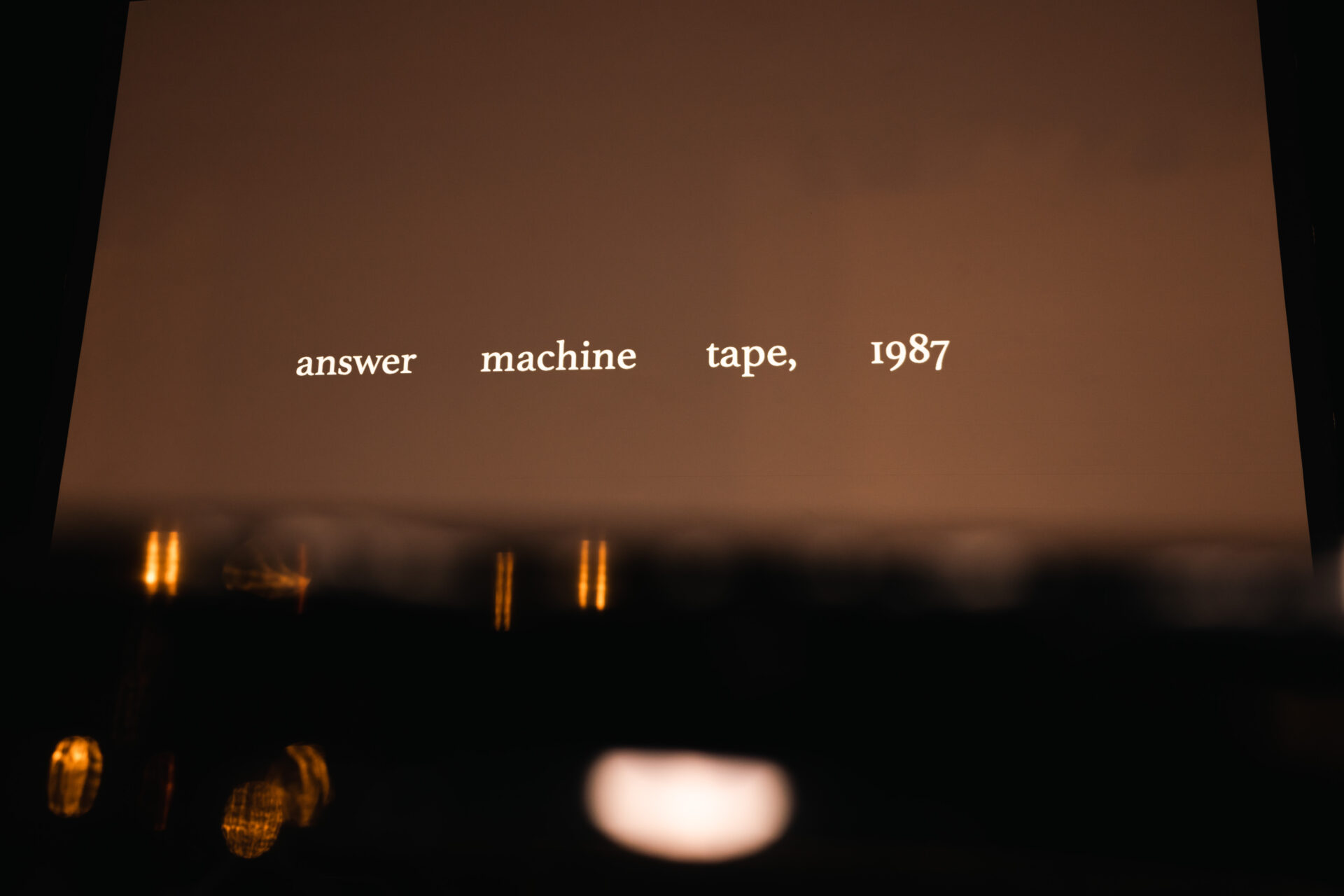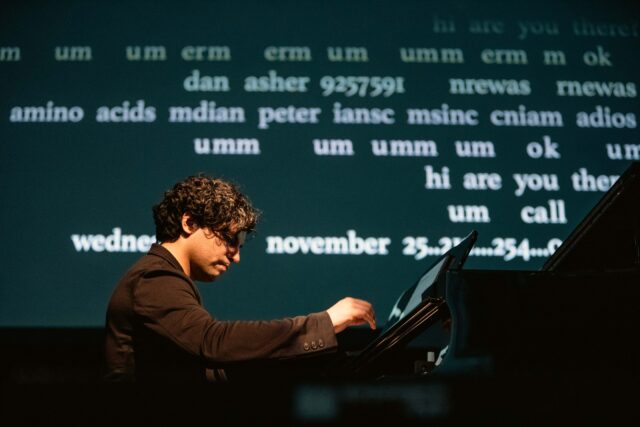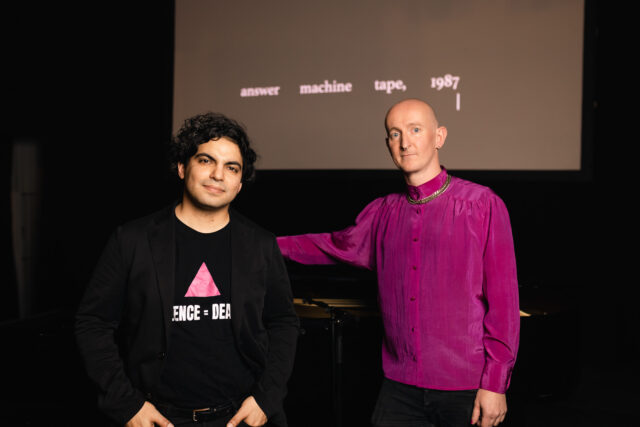Pianist Zubin Kanga presents Answer Machine Tape, 1987, a major new work for piano and multimedia by Philip Venables, created in collaboration with dramatist Ted Huffman and programmer Simon Hendry. It focuses on New York visual artist and AIDS activist David Wojnarowicz and the turbulent period leading up to the death of Peter Hujar – his former lover, close friend and fellow artist – from an AIDS-related illness in 1987. The work’s focal point is Wojnarowicz’s answering machine tape from the days leading up to Hujar’s death, featuring calls from Hujar, other artists, friends and lovers, exploring his life, that period of the New York art scene, queer history and the AIDS crisis.
As part of Zubin Kanga’s Cyborg Soloists research project, the work uses new sensor technology – the Keyscanner created by the Augmented Instruments Laboratory – allowing the piano to function not just as an acoustic instrument, but as a typewriter to transcribe, comment on and illuminate the messages. Answer Machine Tape, 1987 is a work that is enigmatic and meditative, opening a door for the audience and beckoning them to take a step inside. We eavesdrop into a private world; messages are transliterated into a musical fabric, becoming character studies, becoming reflections on a community, becoming attempts to decipher meaning. Transcription, and its failure in the face of extreme difficulty, becomes a poignant metaphor for the AIDS crisis and its devastating effect on a generation.
Philip Venables writes about Answer Machine Tape, 1987
“Over the past five years, Ted Huffman and I have been researching and making pieces about queer personal histories. One recent project involved us researching US-American archives of queer artists and activists from the 70s and 80s, for which we worked in collaboration with Marcelo Gabriel Yáñez. During the first Covid lockdown, I read Close to the Knives and The Weight of the Earth by David Wojnarowicz, and then, for further materials, Marcelo pointed us towards the Wojnarowicz archive held at the Fales Library at New York University. Particularly, he told us about the existence in this archive of an answer machine tape from November 1987, the time of Peter Hujar’s death.
“David Wojnarowicz (1954—1992) was a visual artist, writer, performance artist and AIDS activist prominent in the New York City / East Village art scene during the 1980s up until his death from AIDS-related illness in 1992. His work is well-known for its searing, autobiographical detail, and particularly for the spotlight it shines on the development of the AIDS crisis and the precarity of gay life and emerging artists in the city at the time. David was a close friend and former lover of another artist, photographer Peter Hujar, whom David nursed through the final days before his death from AIDS-related illness on 26th November, 1987. Among other documentations of this period, David took 23 poignant photographs (one for each human chromosome pair) of details of Peter’s body immediately after the moment of death — images which then became Untitled (1988). David also kept the tape from his answer-machine after Peter’s death, which covers the time from 4th November— 1st December 1987, and features 80 minutes of messages from friends, other artists and musicians, his Gallerist, hook-ups, and others caring for Peter.
“Zubin Kanga approached me some years ago about a new large-scale piece for piano, as part of his ongoing research project Cyborg Soloists, which aims to develop the artistic potential of various technological inventions for and extensions of the piano. As a result, we decided to work with the KeyScanner from the Augmented Instruments Laboratory, which non-invasively detects key-strokes on a standard piano. We worked with programmer Simon Hendry to turn the piano into an enormous typewriter, following earlier work in 4.48 Psychosis (2016) and Denis & Katya (2019). The source tape, with only some messages removed for brevity, forms a central thread around which the piano-typewriter explore ideas of transcription and annotation. The narrative presented by the tape is elliptical, opaque, mysterious, intimate — repetitive and yet never repeating. The AIDS crisis haunts every message, and yet the messages themselves, like everyday life, deal mostly only with minutiae and banality. Where are you? Come to my gig. When should I visit? Call me back.
“Answer Machine Tape, 1987 is a work that is enigmatic and meditative, that opens a door for the audience, but requires them to take a step inside. We eavesdrop into a private world, messages are transliterated into a musical fabric, become character studies, become reflections on a community, become attempts to decipher meaning. Transcription, and its failure in the face of extreme difficulty, becomes a poignant metaphor for the AIDS crisis and its devastating effect on a generation.
“Answer Machine Tape, 1987 is dedicated to Joséphine Markovits with much appreciation for her friendship and support.”
Philip Venables
04.06.22
In the Sounds Now project, Answer Machine Tape, 1987 is presented by Time of Music, November Music and hcmf//.

All photographs on this page © Robin Clewley


